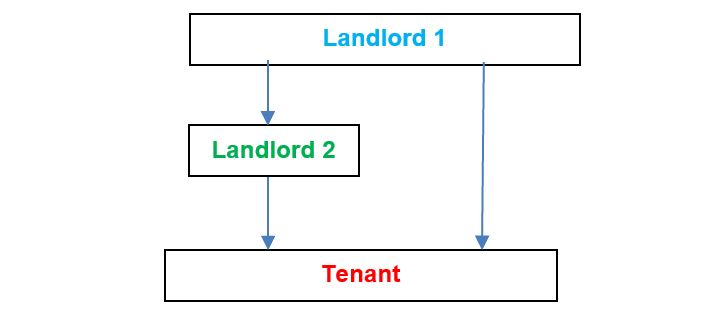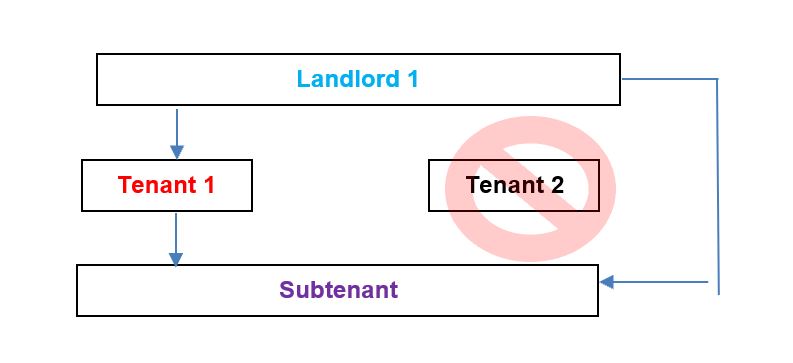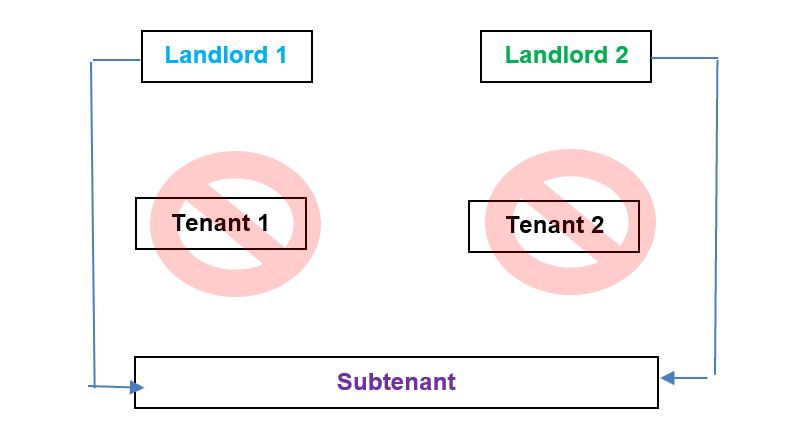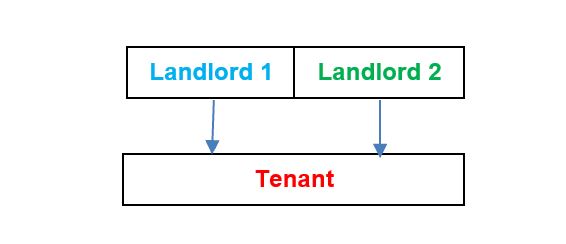Perhaps surprisingly for some, it is possible to have more than one landlord of a single lease. When this (albeit rather rare) situation arises, there are numerous potential pitfalls and hazards which the landlords should be aware of.
What is a split reversion?
A split reversion is, simply put, where you have more than one landlord of a single lease.

How does a split reversion arise?
In practical terms, this situation may materialise in the following situations:
- A landlord sells part of a property which is subject to a lease.

- A tenant leases two properties from the same landlord under separate leases (“superior leases“). The tenant sublets both properties by one single underlease to a subtenant. One of the two superior leases expires, thereby leaving the subtenant with occupation rights against both the tenant and landlord.

- A tenant leases two properties from different landlords under separate leases. The tenant sublets both properties by one single underlease to a subtenant. The leases between the tenant and landlords expire and leave the subtenant with occupation rights against the two landlords.

- Two or more landlords own separate parts of a property and grant a single lease to a tenant jointly together. You should have this scenario in mind if you come across a joint venture style agreement.

What are the issues with split reversions?
It is worth noting immediately that split reversions, according to case law, do not create two separate leases. Instead, there is a single lease with two landlords. This can bring about several issues, especially if the lease was not initially drafted with a split reversion in mind. For example:
- How are rents apportioned between the landlords?
- Who is responsible for complying with the landlord covenants?
- Who does a tenant have right of remedy against?
- Can one landlord act unilaterally or do they have to act jointly?
- Can one landlord forfeit the lease and extinguish the lease (and the income stream!) of the other landlord?
What practical steps should you take if you come across a split reversion?
Apportionment of rent
Even in the event that apportionment of rent can be agreed between the landlords (this should be considered in any contract for sale if part of the reversion is being sold to a third party), the agreed apportionment is not binding on the tenant unless the tenant also consents or it is otherwise ordered by the court or under statutory powers. This consent should be done through a tripartite deed between landlords and tenant.
Apportionment of liability and landlord covenants
Landlords should consider how they will perform the landlord covenants under a lease once it has been split. Particularly, they should agree how the following obligations will be shared:
- Providing consents to the tenant (Eg. Assignments, underlets, alterations)
- Collecting insurance premiums and service charge
- Taking out insurance and providing the services
- Repair obligations
It should be noted that if the lease being split is an “old” lease under the Landlord and Tenant (Covenants) Act 1995, the original landlord will remain liable for all the landlord covenants in the lease despite the split reversion. “New” leases allow for landlords to apportion liability between themselves where it is not particularly attributable to one or the other.
Unilateral action
Joint landlords must be aware that each landlord may have powers to affect the other landlord’s reversion, particularly in respect of forfeiture and surrender.
If one landlord serves a valid notice to quit on the tenant, the tenant can determine the lease as a whole by serving a counter-notice on the other landlord.
Similarly, tenants must be aware they cannot surrender only part of their demise without involving both landlords as the premises are let under a single lease. If a surrender of part is agreed with a single landlord in respect of their demise, the tenant may remain liable for the covenants under the split reversion lease in full to the continuing landlord (including full rent).
Conclusion
Generally, all parties should be cautious in any situation where a split reversion may arise and generally alternate legal structures should be sought. If a landlord or tenant believes a split reversion may already exist, they should seek legal advice.
Key Points
- Avoid situations which would create a split reversion where possible.
- When encountering a split reversion, ensure apportionments of rent and responsibilities of landlords are clearly defined.
- Be aware of one landlord’s power to forfeit the lease on behalf of the other landlord.




